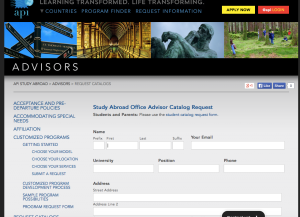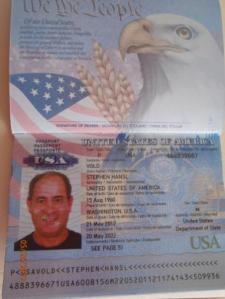An Introduction to This Adventure
So. My name is Mary. I’m a junior in college. I’m studying journalism and political science. My school is in Colorado, although I’m from Massachusetts. I am a transfer student, which just adds another layer of stuff to worry about when it comes to this whole study abroad ordeal.
I’m not going to lie to you, dear reader: I started this blog because it is a class assignment. Over the course of the semester, I’m going to be coming to you live every week with the latest attempts with my attempt to apply for study abroad.
I promise to make it at least slightly interesting.
The most important thing you should know about me is that I try not to take anything too seriously.
I’m thinking about structuring these posts with a more personal update on things at the beginning before I get into more informational stuff. Otherwise, these posts will just contain my own rants about money and how much I hate the FAFSA.
(And trust me, no one wants to read that.)
Right now, things are okay. I’ve narrowed down my list of potential locations I’d be interested in and I filled out all the personal information for one of the applications. My school is hosting an event tomorrow to talk about study abroad funding but I can’t go because I have class, as usual. I think the next step will be to meet with my advisor and talk to her about classes. If she doesn’t think I can do this, it will be null and void and I’ll have to find a new topic to blog about. We’ll see.
6 Resources to Find the Best Study Abroad Program for You
1. Study abroad website
This is probably the most obvious of this list, but consult your school’s study abroad department website. This will be where you can find upcoming events like panels, featured programs, and general information about study abroad concerns. This resource will also generally have a search option that will allow you to sort programs by location, term, GPA, etc.

The search option on my school’s study abroad website. A wonderful resource.
2. Informational fairs
The informational fair is my personal favorite. Your study abroad office will, from time to time, host informational fairs where representatives from different programs will come to your school with brochures and will be able to talk with you about their program. I’ve only been to one of these but I thought it was a great experience. I would recommend going alone so that you have enough time to go to the tables of programs you’re interested in. Also, make sure you give yourself enough time to see everything and ask questions!
3. Informational sessions hosted by the Study Abroad office
If you can’t make it to an informational fair, not to fear! Your study abroad office will offer informational sessions—probably once or twice a week—where you can go in and hear about the logistics of study abroad for your particular institution. This can be a valuable time to ask questions about things like registering for classes and financial aid/scholarships.
4. Study abroad advisors
If you can’t make it to either an informational fair or an informational session, you have another resource! Study abroad advisors are professionals who work in the study abroad department of your school. They are usually affiliated with a specific region (South America, Western Europe, etc.) or type of program (semester, full year, summer, etc.). Most study abroad websites will allow you to view the advisors as well as their contact information. You should feel free to shoot them an email and ask whatever questions you have. This is a great resource as you start applying for specific programs or have questions about locations.
5. Request catalogs and brochures
You don’t always have to rely on your study abroad office to learn about your options. If you visit a program provider’s website (such as API), you will be able to request catalogs about the types of programs they have to offer. Some providers will let you get more specific: you can see all of the programs they offer in the summer, in Spain, etc.

The API allows you to request catalogs about their programs.
6. Network!
Do not be afraid to talk to others about their experiences! Ask your professors or other students in your classes if they’ve ever studied abroad. Where did they go? What program did they use? Did they like it? Did they feel safe? Did they learn something? This will help you to narrow down a seemingly endless list of possible programs into a more reasonable list of those programs that truly have something to offer you.








